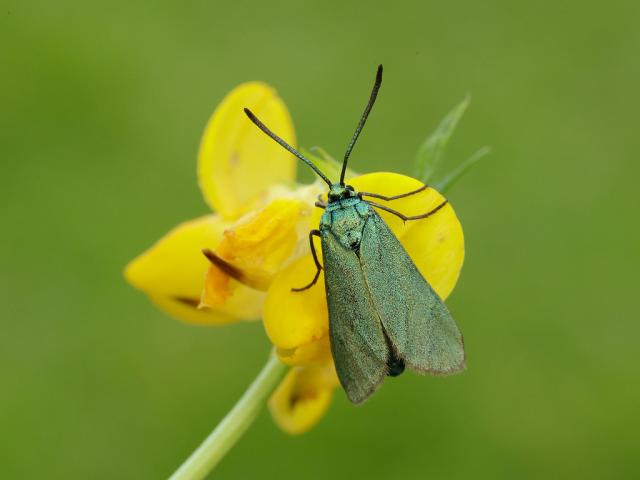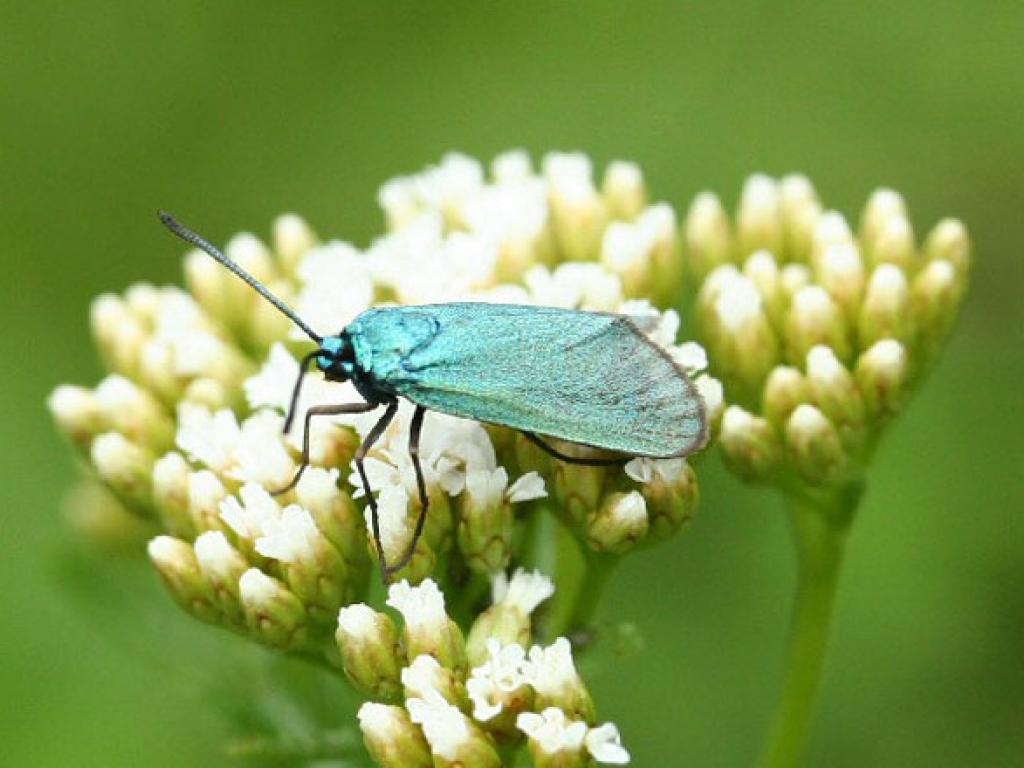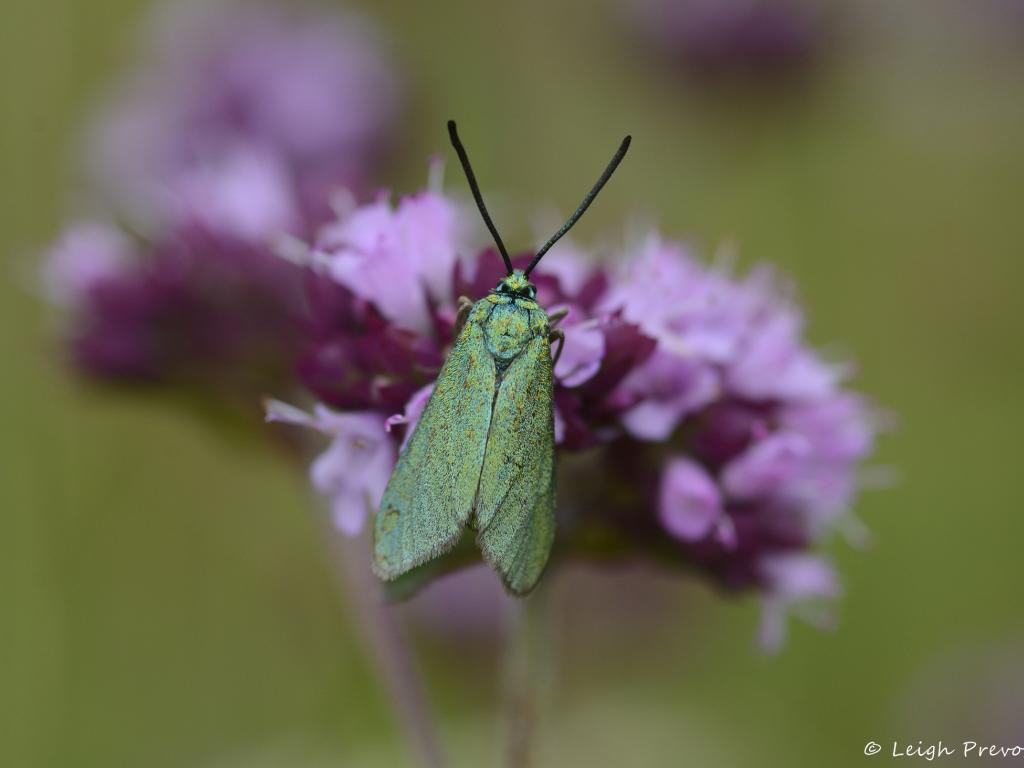
Forester
One of three similar species, this iridescent green moth can be difficult to distinguish from related species. Generally larger than the Cistus Forester (which is usually found near Common Rock-rose). Can be distinguished from the Forester on antennal characters, those of the male Scarce Forester being more pointed, whereas those of the Forester are rounded and broader.
The male flies in sunshine, although the female is generally more lethargic, and visits flowers such as knapweeds and Salad Burnet. In duller weather the moth sits around on flowers and other vegetation. The male occasionally flies at night.
Common Knapweed and Greater Knapweed, at least initially mining the leaves.
Found on permanent chalk grassland, usually in areas of longer turf.


Scarce Forester - Leigh Prevost
Leigh Prevost